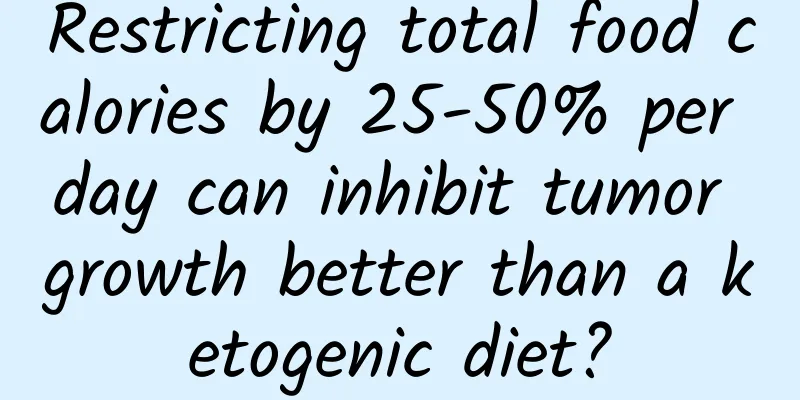Restricting total food calories by 25-50% per day can inhibit tumor growth better than a ketogenic diet?

|
Cells grow on energy, and glucose is the most direct source of energy available to cells. Cancer cells have been found to consume large amounts of glucose, so it was thought that reducing glucose would reduce the amount of glucose available to cancer cells, thus slowing tumor growth. The easiest way to reduce the amount of glucose is to control your diet and design a diet. The most commonly used and popular ones are the ketogenic diet or the calorie-restricted diet. Ketogenic diet (KD) It is a diet with a high fat ratio, a low carbohydrate ratio, and appropriate protein and other nutrients. During a ketogenic diet, the body metabolizes and produces more ketone bodies (including acetoacetate, β-hydroxybutyrate, and acetone) as energy sources. Caloric restriction (CR) diet While providing adequate nutrients such as essential amino acids, vitamins, etc. and ensuring that malnutrition does not occur, limit the total daily calorie intake and reduce the total calorie intake by 25-50%. Can this method really control the growth of cancer cells? Studies have shown that calorie restriction can not only delay tumor growth, but also extend the life of experimental animals. However, there are still differences between these two methods. A recent study found through a pancreatic cancer mouse model that only calorie restriction can inhibit tumor growth, but a ketogenic diet cannot. What is going on? 1. Calorie restriction reduces lipid levels in both plasma and tumors 2. Reduced stearoyl-CoA desaturase (SCD) activity 3. Cancer cells cannot obtain lipids from the diet, and it is difficult for them to produce lipids themselves. 4. Ultimately, it leads to restricted tumor growth. In contrast, the ketogenic diet, although it also reduces SCD activity, increases blood lipid levels. Therefore, cancer cells can obtain enough lipids through diet to grow and divide. In simple terms: Calorie restriction lowers both blood sugar levels and blood lipid levels, while the ketogenic diet only lowers blood sugar levels but increases blood lipid levels. It seems that there is still a great opportunity to control tumor growth through dietary adjustments. Humans can take advantage of this characteristic of cancer cells and inhibit tumor growth by inhibiting the activity of SCD, which may represent a new direction for cancer treatment. Lien, EC, Westermark, AM, Zhang, Y. et al. Low glycaemic diets alter lipid metabolism to influence tumor growth. Nature (2021). doi.org/10.1038/s41586-021-04049-2 |
<<: Who invented the first printer and when?
Recommend
Can pregnant women eat black bean sauce?
For pregnant women, as long as they have passed t...
How to judge the leakage of amniotic fluid in pregnant women
I believe everyone knows how important the amniot...
What are the symptoms of female urination?
The so-called urinary retention actually means th...
Wristly: Survey shows 80% of Apple Watch users are using Apple Pay
According to the survey data released today, 80% ...
Can I swim on the second day of my period?
In our lives, many people like swimming, because ...
Leucorrhea with odor, no itching or pain
Leucorrhea is a secretion from the female reprodu...
Can pregnant women eat beef jerky in the early stage?
Some pregnant women still cannot control their li...
What is painless natural childbirth?
With the continuous advancement of medical techno...
What are the methods for making cherry wine? What should we pay attention to when making cherry wine?
The wine selected for making cherry wine must be ...
I feel uncomfortable in my stomach after doing vaginal ultrasound
There is a big difference between the physical ex...
What causes breast pain?
Breast pain is relatively common in clinical prac...
What causes pimples on female vulva?
Due to the increasing pressure of life, female fr...
Are compressed biscuits nutritious? How to eat compressed biscuits
Compressed biscuits are a kind of puffed food tha...
What to do if your vagina becomes loose after a normal birth
Giving birth is a dangerous process for women. No...
Can’t move your fingers? Let’s talk about “trigger finger”
1. What is trigger finger? Trigger finger is also...









